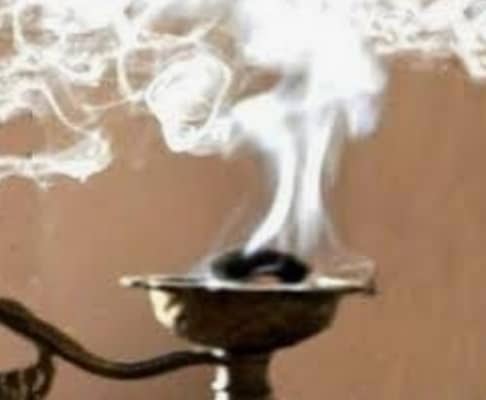Dhoopan Chikitsa: Fumigating Therapy In Ayurveda
We are living among a lot of microorganisms; some are useful to us, some are not. Maximum of them live in commensalism with human, and are not harmful, or are opportunistic which may prove hazardous in immune compromised hosts. Others include some potential harmful bacteria also, like gram-positive cocci Staphylococcus aureus. In this article, we will explain Dhoopan Chikitsa in detail.
The harmful microbes can be dangerous to open wounds, in labor rooms, and also in our kitchens and living rooms. Thus proper disinfestation is a major aspect to be dealt properly in such settings and as the bacteria are dynamic and new resistance emerging, it is a challenge to abolish these creatures completely.
Ayurveda provides a holistic way of handling these natural factors. Dhoopan chikitsa (fumigation therapy) falls under the subheading of bahi-parimarjana chikitsa (topical treatments), described in detail in Kasyapa Samhita. Dhoopana (medicated smoke) creates an aseptic environment, kills microbes and thus, prevents infection.
Origin of Dhoopan Chikitsa
The preform of dhoopan can be seen in Vedic rituals. The fire procession of Yagya and Homa done for prayers of peace would include servings of different aromatic and medicinal plants to fire. Dhoopan may have evolved and introduced into Ayurveda from these rituals for the purpose of saving health.
Dhoopan Chikitsa in Ayurveda has been described as Bhootaghna. Bhoota in Ayurveda denote minute and invisible organisms that are responsible for various kinds of exogenous diseases. Dhhopan was seen as a measure to control the spread of such etiological factors in order to prevent the spread of disease.
Indications for Dhoopana
In Ayurvedic therapeutics, dhoopan Chikitsa is given for many purposes:
- For sanitization and purification of premises.
- For easy and punctual delivery.
- For sterilizing the pots in which medicines are to be stored.
- For disinfecting the Kumaragara (child care home).
- For repelling the insects, poisonous animals etc.
- For facilitating proper development of children.
- For treating diseases such as Balagraha (infectious pediatric diseases), skin diseases, cold, fever due to Vata dosha, insomnia, epilepsy and so on.
Dhoopan chikitsa is sometimes given alongside other therapies. Therapies given along with Dhoopan are perceived by the patients to be more effective than done without Dhoopan.
Method of Dhoopan chikitsa
All the Dhoopana substances are collected, dried, made into a coarse powder and put on fire to produce smoke. It’s best to burn the Dhoopa on ignited cow dung cake as this releases smoke steadily and gradually, however it is also possible to use hot charcoal, ignited coconut shell or even electric Dhoopa pot etc.
Dhoopan chikitsa is taken on a specific part of body e.g. wound or ears or anus etc. or on the entire body as per the necessity. It can be done in a secure place like a room or an operation theatre or done in an open space to purify the atmosphere.
Source of Dhoopa substances
Kashyap Samhita states that substances like Ghrita (ghee), Guggulu(Commiphora mukul), Laksha, Vacha (Acorus calamus), Sarshap (mustard), Haridra(turmeric), are commonly used for dhoopan Chikitsa. Other sources include:
Sthavara / Plant origin – Nimba (Azadirachta indica), Vidanga (Embelia ribes), Tulsi (Ocimum sanctum), etc
Jangama / Animal origin – Horn, Hair etc.
Khanija / Minerals – Hartal, Manashila (Arsenic sulphides) etc.
When burnt on fire, these substances give beautiful aroma and spread in the atmosphere along with air. Being very subtle, the smoke can reach in the minute most space and carry all the properties of all its ingredients.
Almost all the Dhoopa ingredients belonging to plant origin have action of deodorant, antiseptic, insecticidal, anti-pyretic and anti-inflammatory. While the dhoopan material from animal and mineral sources are often rich in Sulphur. Fumes of these material are shown to be effective disinfectants.
Dhoopan for daily usage
For your home and office, you can use easily available herbs like tulsi, ghee, turmeric and sanitize and spread a positive energy in your surroundings. Gum resin of Sal (Shorea robusta) and Guggulu(Commiphora mukul) can also be a good choice for Dhoopan chikitsa. Incense sticks of Himalayan herbs are also available and highly recommended.
